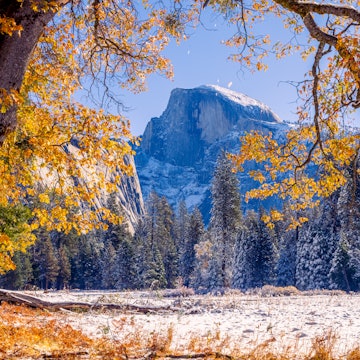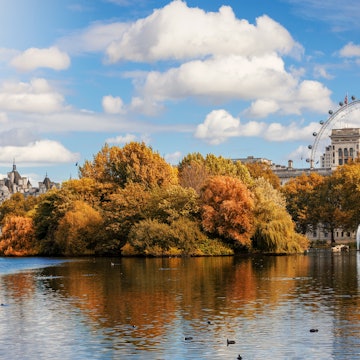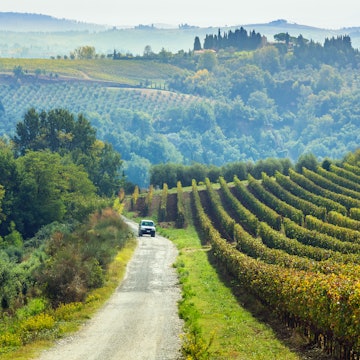

Hiking in Sequoia National Park. My Good Images/Shutterstock
There’s no mistaking the main attraction of Sequoia National Park – giant Sierra redwood trees as tall as they are ancient. But even beyond the famous, towering sequoias, this park in California’s Sierra Nevada has mind-boggling dimensions.
The peaks of the Great Western Divide soar higher than 12,000ft, creating a skyscraping backdrop to the park’s 631 sq miles of woodlands, meadows and granite domes. It’s a grand setting for every level of adventure – easy strolls through sequoia groves, white-water rafting and going off-grid in remote glacier-carved valleys.
Despite its proximity to A-list national park Yosemite, more than 1.2 million people come to this rugged realm of the Sierra annually. If you’re one of them, well done on your excellent choice; you even have the option of Kings Canyon National Park right next door.
Here’s everything you need to know about visiting Sequoia’s huge peaks and titanic trees for the first time. However, before visiting any US national park, visitors should be aware that staffing cuts in the National Park Service (NPS) are having an impact on the amenities available.
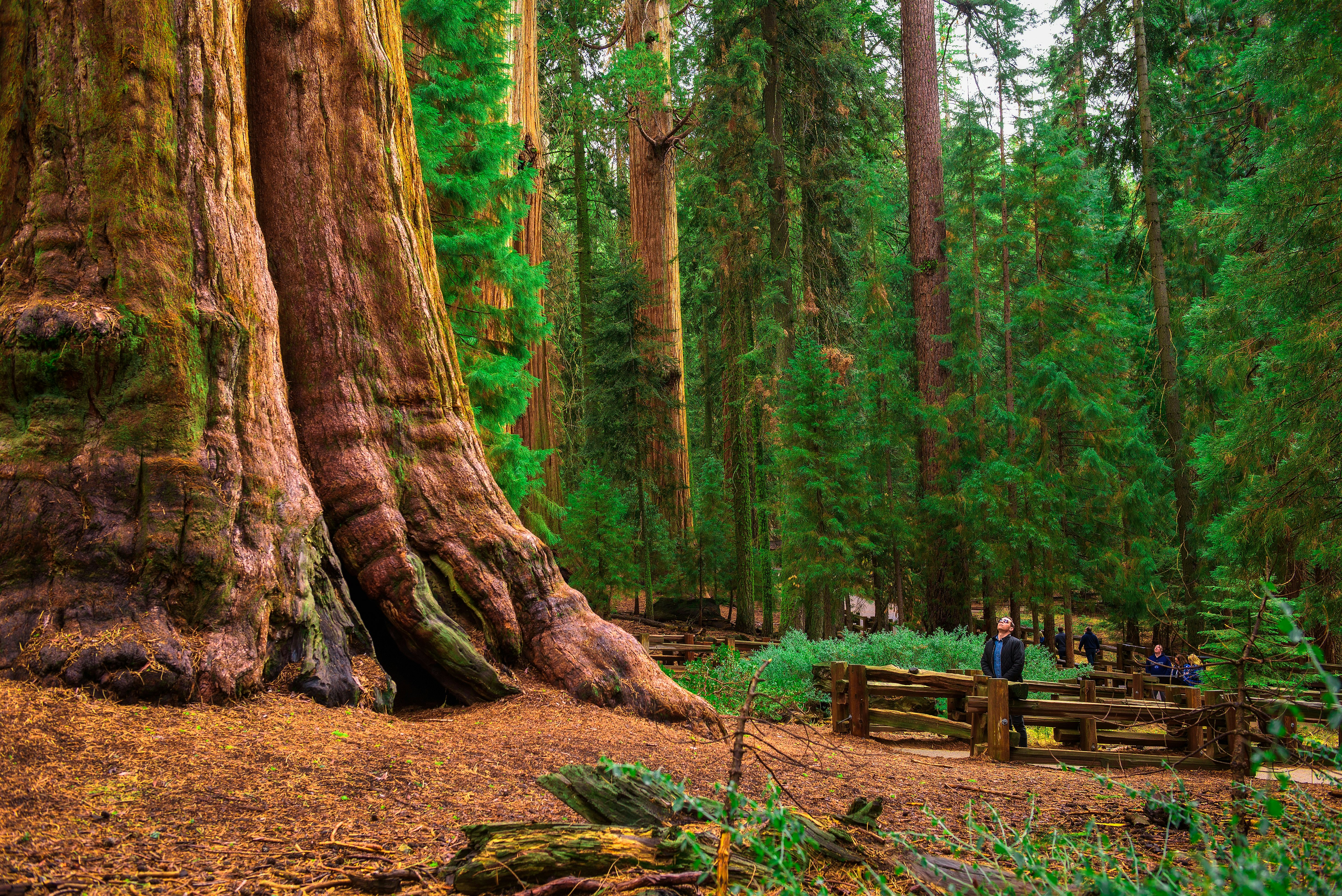
When should I go to Sequoia National Park?
The best time to go to Sequoia National Park is between June and September, especially if you plan to hike. July and August are the busiest months of the peak summer season – book lodges and campsites well in advance and seek shade in the middle of the day as the mercury can soar to 105°F. June or September are fine choices for mellower temperatures and quieter hiking trails.
Springtime is a roll of the dice – stubborn snow hangs around in April and May, making higher-elevation trails impassable. Stick to lowland areas like the Sequoia Foothills and the Giant Forest, which is even more enchanting with a dusting of snow. But for river rafting just outside the park, spring is paradise; crystalline snowmelt fills the Kaweah River from late March, and waterways are at their swift-running best in late May and June.
Many areas of Sequoia National Park are shuttered from October until the end of winter, which can be any time between late March and early June. Park lodges, campgrounds and shuttles don’t operate. Still, the Giant Forest Museum stays open and it’s a great time to visit with kids – check out the Wolverton Snowplay Area (or, in neighboring Kings Canyon National Park, toss snowballs around the Big Stump Grove picnic ground). Ensure your car has winter tires or carry chains – and know how to put them on! – and note that snow generally closes the Generals Highway, which connects Sequoia and Kings Canyon, from late December through March.

How much time should I spend in Sequoia National Park?
Stay a day for a taster, a weekend to cover big forests and a couple of hikes, but ideally allow a week for some longer trails.
Some visitors alight in Sequoia National Park purely to see the Giant Forest; it only takes half a day to see goliaths like the General Sherman Tree (276ft), contemplate the beheaded Washington Tree (now 115ft), while pootling along paths like the 2.7-mile Congress Trail. With a full day, you can hike up the 350 steps to the top of Moro Rock. Do this part first if you’re visiting in the heat of midsummer – even hardened hikers break a sweat on this exposed climb!
If you have a whole weekend, book a tour of the 100,000-year-old Crystal Cave (summer only) before heading on a hike around Crescent Meadow (1.5 miles or more as this loop is easily extendable) or small but lovely Marble Falls (6.2 miles return).
Got more time? Unfold a map of Sequoia National Park and you’ll see a huge realm extending east from the Generals Highway, where far fewer tourists tread. With backcountry knowledge and a can of bear spray, you can head to the most remote area of the park, Mineral King (summer only). The expansive views en route to Monarch Lakes (8.4 miles return) are a fine introduction to this high-altitude realm. Bring plenty of water and mosquito spray.

Is it easy to get in and around Sequoia National Park?
Public transit options work nicely if you're flexible and visiting during peak hiking season (July to September). If you’re staying in the attractive gateway town of Visalia, 35 miles southwest, you can book a spot on the Sequoia Shuttle to visit the park car-free. Within Sequoia National Park, trailheads and major destinations are connected by free park shuttles, which typically operate between late May and the beginning of September.
The network of free shuttles doesn’t extend across the park border into Kings Canyon, so self-driving is the best way to see both parks. It’s also essential to have your own wheels, ideally a 4WD, to reach the Mineral King area.
The downsides of driving are the slow crawl into the park on popular midsummer days and the scuffle for parking spots, especially on holidays. Even with a car, you might find yourself using park shuttles when your chosen parking lot’s full and you’re directed to an overflow, usually just a short park-and-ride away. Avoid the hassle by setting your alarm early or staying overnight in the park.
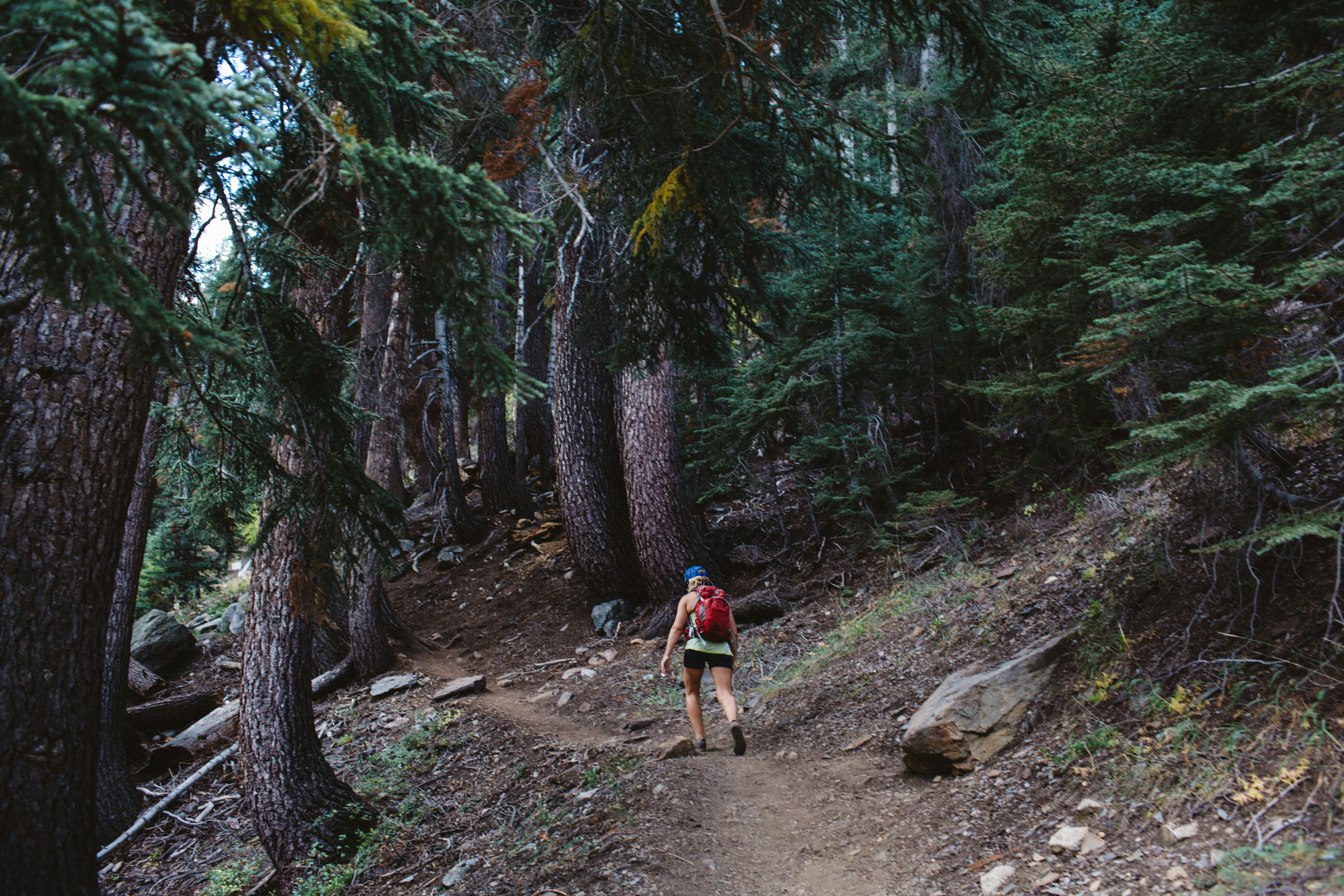
Top things to do in Sequoia National Park
Hike the Tokopah Falls Trail
One of the most beautiful short hikes is the Tokopah Falls Trail (3.4 miles return). It’s a showcase of Sequoia National Park’s best features – towering walls of granite, forests filled with birdsong, and the foaming waters of the Marble Fork Kaweah River. Begin at Lodgepole Campground and follow the Marble Fork until the trail climbs uphill, crisscrossing creeks and snaking up to 1200ft-tall Tokopah Falls. It’s spectacular in spring when the force of the waterfall hurls clouds of mist into the air.
Go stargazing
For the best possible experience (and to enjoy the space and peace after the day trippers leave), stay overnight and stargaze amidst the stillness of the forest. Stargazing tours depart from Wuksachi Lodge where expert guides point out the stars while you gaze into the twinkly darkness, your imagination running riot.

Drive through Tunnel Log
Or how about driving through a gigantic log? Tunnel Log, a fallen sequoia more than two millennia old, lies flat across Crescent Meadow Rd in the Giant Forest. A tunnel was carved through it in 1938 and regular-sized cars can still pass through (it’s 17ft wide and 8ft high…know your vehicle’s measurements and steer with care!)
My favorite thing to do in Sequoia National Park
What I love most about Sequoia National Park are the places that bend my sense of time and space. Hanging Rock, a short walk that branches off Crescent Meadow Rd (near the bottom of the Moro Rock Trail) is one of my favorite lookouts – the panorama across the Kaweah River Valley is almost too vast for my mind to process.
How much money do I need for Sequoia National Park?
The cost of visiting Sequoia is on par with other national parks in the US. For dining and sleeping within the park, you’re very much paying for the location but there are simple ways to trim the costs, like camping or staying in towns outside the park, such as Three Rivers or Visalia. An added bonus is day-trippers can grab breakfast from Sequoia Coffee Co on the way into the park or pause for a bite to eat and something cold and hoppy at Three Rivers Brewing Co. on the way out.
Park entry fee (includes Kings Canyon) per car/person: $35/20
Breakfast burrito in Three Rivers: $6
Sandwich: $10
Tent site within the park: $32
Tent site at a USDA Forest Service campground: $18
Double room in a park lodge: $300
Dinner for two with wine at the Peaks Restaurant: $130
Stargazing tour: $20
Roundtrip by bus between Visalia and the park: $20
Motel room in Three Rivers: $180

Are Sequoia and Kings Canyon the same park?
Think of these two national parks as lookalike siblings, each with their own individual talents. Both parks have monumental peaks, tall trees and excellent hiking, but Sequoia (naturally) has the bigger sequoia groves while its neighbor boasts the Kings Canyon Scenic Byway, a road trip linking waterfalls, panoramic lookouts and the glorious Zumwalt Meadow. Kings Canyon and Sequoia are jointly administered, which means the entry ticket grants access to their combined 1353 sq miles.
Which is the best entrance to Sequoia National Park?
Reach Sequoia National Park from the southwest through the Ash Mountain entrance, passing through the town of Three Rivers (Hwy 198). Alternatively, you can start in Kings Canyon National Park, which is accessed through the Big Stump entrance. Continue north along Hwy 180 for General Grant Grove, the starting point for Kings Canyon’s main attractions (including General Grant, the world’s second-largest tree) or take the Generals Highway southeast into Sequoia National Park.
What are the best places to stay in Sequoia National Park?
Campgrounds like Potwisha and Buckeye Flat are an ideal balance between easy road access and proximity to hiking trails, or you can stump for comfort at the Wuksachi Lodge. When the national park campgrounds are full, the US Forest Service campsites expand your menu of options. Many travelers stay in Three Rivers or Visalia – both of which have good-value motels and guesthouses – and day-trip into the park.

Are dogs allowed in Sequoia National Park?
Like in other US national parks, dogs (other than service animals) are not allowed on any trails in Sequoia National Park. Dogs on leashes are technically permitted in parking lots and campgrounds, but pet owners are encouraged to leave furry friends at home for the benefit of local wildlife. The surrounding lands operated by the US Forest Service do allow canine companions provided you keep them leashed. Check out trails and campgrounds on the USDA site.
What’s the best time of year to visit Sequoia National Park?
By sheer accessibility, summer (June to August) is prime time. Trails are open, shuttles are operational, and campgrounds and lodges alike welcome visitors. This is also the hottest time in the park when high-altitude hikes are best attempted early in the day. If you’re sensitive to heat, May or September are superior choices, with seasonal perks like spring flowers and fall colors.
Are there bears in Sequoia National Park?
Yes, black bears are very much at home in Sequoia National Park. Keep your distance if you’re lucky enough to see these curious foragers in the wild. Secure your food and under no circumstances approach or attempt to feed them. Not only does it disrupt the bears’ natural habits, but you’re practically training them to seek out human company and food (something to contemplate as you zip your flimsy canvas closed each night…).
What should I wear and pack in Sequoia National Park?
Weather in lofty terrain like Sequoia can change in a flash so cover your bases by packing a medley of light cotton and moisture-wicking shirts along with warming fleece layers. Make sure your hiking boots are fully broken in.












